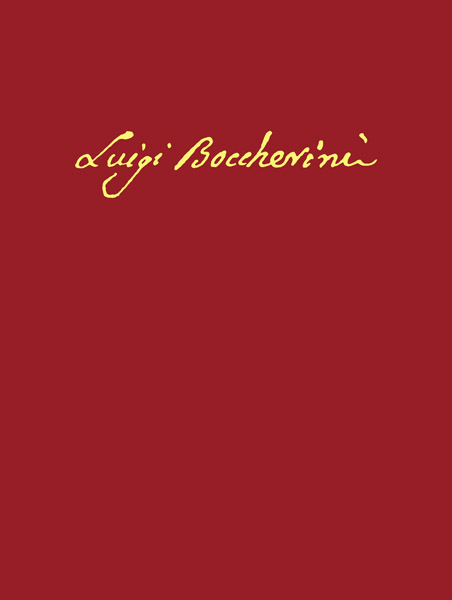edited by Rudolf Rasch, Bologna, Ut Orpheus Edizioni, 2022 [Opera Omnia – Vol. Vol. XXVI.4], ISMN: 979-0-2153-2751-1, ISBN: 978-88-8109-525-4, BCE 11.
The Quartets Op. 15, composed in 1772, represent Luigi Boccherini’s fourth set of string quartets, following three earlier sets, composed in 1761, 1769 and 1770 respectively and later assigned the opus numbers 2, 8 and 9. The Op. 15 Quartets differ from their predecessors by being ‘small quartets’, consisting of only two movements, instead of three or four, which is the norm in the earlier works.
They are, in fact, the first works composed expressly as an ‘opera piccola’, to distinguish them from the three- or four-movement works that were characterized by Boccherini as ‘opera grande’. No autograph manuscripts of Boccherini’s Quartets Op. 15 are known to have been preserved to the present day, but there are several early editions as well as some early manuscripts that transmit the works.
Traditionally, the edition published by Jean-Baptiste Venier in 1773 under the title Sei divertimenti per due violini, alto e violoncello, Opera xi has been considered the first edition. Recently, however, the editor of the present volume was able to show that there must have been a Spanish edition, published in Madrid, which preceded the French edition by just a couple of weeks. It was advertised by the Madrilenian music seller Antonio del Castillo in the Gaceta de Madrid of 2 March 1773.
No extant copy of the Madrid edition of Boccherini’s Quartets Op. 15 is known to be extant today. The edition of the Quartets Op. 15 brought out in 1774 by the Venetian publisher Luigi Marescalchi, however, appears to be a re-issue from the plates of the Spanish edition and several copies of this edition are preserved. No more than a superficial inspection is sufficient to testify to their Spanish origin.
The style of engraving is completely that of Juan Fernando Palomino, the Madrilenian engraver who was responsible for most of the editions advertised by Castillo in the years 1771-1773. There are clearly Spanish spellings such as «Quarteto», «Minueto» and «Prestisimo», at several places in all four parts. Also, it may be remarked that the Venetian edition presents the six Quartets in the order in which they appear in Boccherini’s own thematic catalogue.
If we identify the Quartets by their keys, then Boccherini’s order was: (1) F major, (2) E major, (3) C minor, (4) E-flat major, (5) F major again, and (6) D major. This is exactly the order of the Venetian edition. The Venier edition presents the quartets in a different order.
The present edition is based on the Venetian issue of the Spanish edition.












